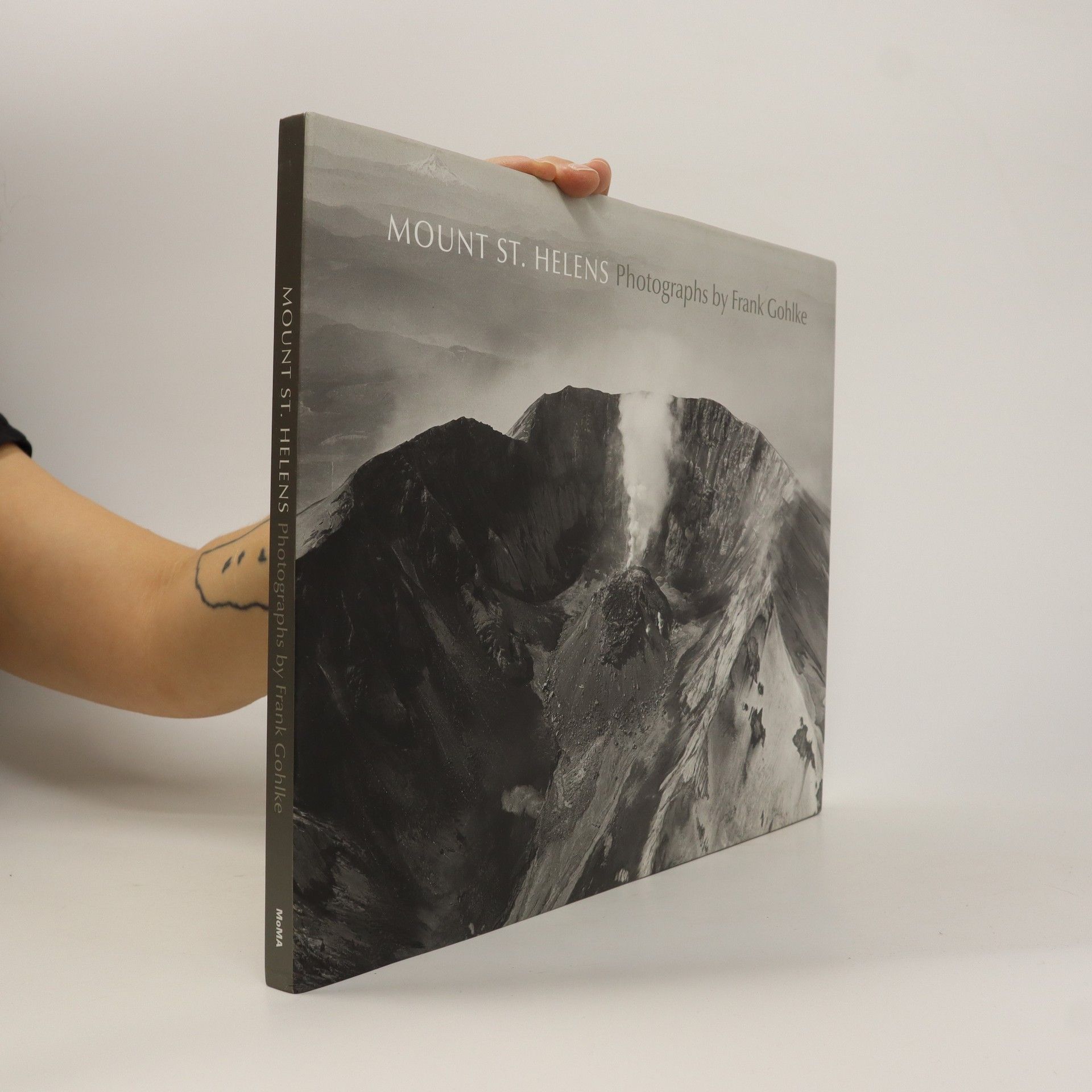On the morning of May 18, 1980, the Mount St. Helens volcano in the forests of Washington State exploded. First, months of building interior pressure triggered a massive landslide, removing the entire north face of the mountain. This avalanche was followed immediately by a violent eruption that ultimately expelled over a quarter-billion cubic yards of magma. The blast devastated roughly 250 square miles, leaving behind scoured rock, millions of fallen trees, and mud-choked river valleys. Yet the land returned, gradually restoring and regenerating itself. Beginning in 1981 and continuing until 1990, photographer Frank Gohlke made regular visits to the devastated land around Mount St. Helens. This collection of photographs of biblical grandeur records both the ravaged terrain around the volcano in the early years after the eruption, and the regrowth--slow but extraordinary--of the region's natural forest. Mount St. Helens: 1981 to 1990 contains a dramatic selection of these photographs; an introductory essay on the volcanology and geology of the Pacific Northwest by Kerry Sieh and Simon LeVay; and notes on the images by the photographer himself.
Frank Gohlke Knihy




Landscape as longing: Queens, New York
- 180 stránok
- 7 hodin čítania
In 2003, Frank Gohlke and Joel Sternfeld were commissioned to photograph the borough of Queens, New York City, known for its ethnic diversity. Over a year, they captured the complex dynamics of its communities, developing a unique theory of landscape photography where the landscape reflects the invisible emotions of its inhabitants. Gohlke's work features streets, houses, gardens, and shorelines, highlighting the tension between human arrangements and natural forces like vegetation, weather, and decay, alongside the impact of commercial culture. Sternfeld's focus is on the local shops, restaurants, mosques, and temples that create a multicultural experience, reminiscent of places like Thailand, India, or Peru, often found in homes or repurposed factories. These locations symbolize a connection to a homeland, real or imagined. Accompanied by an essay from acclaimed writer Suketu Mehta, this collection serves as a powerful tool for understanding the intricate landscape of Queens, making its vibrant patchwork both accessible and visible.
Measure of Emptiness is a meditation on the vast spaces of the Great Plains, the heartland of American agricultural productivity, and the centrality of the grain elevator to its social, cultural and symbolic life. In photographs made between 1972 and 1977 with the support of fellowships from the Guggenheim Foundation and the National Endowment of Art, Frank Gohlke traveled back and forth through the central tier of states from his home in Minneapolis, Minnesota, to the Texas Panhandle, seeking an answer to the puzzle of the grain elevators’ extraordinary power as architecture in a landscape whose primary dramas were in the sky. “In the United States there is more space where nobody is than where anybody is,” said Gertrude Stein. The Great Plains are characterized by this spaciousness, and by the presence of windowless, rumbling, enormous grain elevators, rising above the steeples of churches to announce the presence of the town and to explain, in great measure, the lives of and livelihoods of its inhabitants. Why did their builders choose that particular form to fulfill and practical necessity? And does the experience of great emptiness shape what people think, feel and do?
Speeding Trucks and Other Follies
- 96 stránok
- 4 hodiny čítania
In the summer of 1971 Frank Gohlke moved with his wife and young daughter from Middlebury, Vermont to Minneapolis, Minnesota. His vocation as a photographer had begun four years prior, but he had yet to define the subject that would occupy him for the next 45 years: the landscapes of ordinary life. The three bodies of work brought together in Speeding Trucks and Other Follies were all made between Gohlke’s arrival in Minneapolis and the end of 1972 when he began photographing grain elevators, a project that first established his renown. In different ways these early series obliquely describe Gohlke’s process of adjustment to his new surroundings. The “Speeding Trucks” photos of the first section began when Gohlke noticed how the shadows of the elm trees that once lined most Minneapolis streets were momentarily materialized on the bodies of passing trucks. The travel trailers in the second section were all found in a Minnesota State Park on one of the family’s infrequent camping trips, while late-night rambles through Gohlke’s Minneapolis neighborhood led organically to his series of dramatic night pictures in the last section. Notwithstanding their various subject matter, Gohlke’s photos in this book collectively perform a kind of timeless alchemy on the everyday stuff of visual experience.